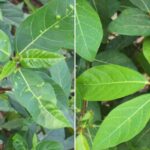Purslane, or Portulaca oleracea, is a succulent herb with a light green or slightly reddish, creeping stem that often spreads along the ground. This plant is well-branched, with stems ranging from 10 to 30 cm in length. The leaves are a deep green and either sessile or possess very short petioles.
Purslane is native to tropical and subtropical regions worldwide, including Vietnam, where it commonly grows wild in vacant lots, along roadsides, in rice fields, and home gardens. This hardy plant adapts to various soil types, tolerates drought, but does not fare well in waterlogged conditions. It thrives during the summer months when temperatures and humidity are high.
In the past, purslane was considered a weed or a famine food during periods of vegetable scarcity. However, with the abundance of green vegetables available today, this plant often goes unnoticed. Ironically, purslane is a nutritional powerhouse, boasting a plethora of health benefits.

According to VietNamNet, modern research has revealed the presence of various bioactive compounds in purslane, including Flavonoids, Coumarins, Monnoterrpene Glycosides, and Phennolic compounds. It is also a source of beneficial fatty acids such as omega-3, vitamins, minerals, and other health-promoting compounds.
Flavonoids, the most abundant component in purslane, are concentrated in the leaves and stems. They possess potent antioxidant and anti-inflammatory properties. Numerous studies have demonstrated the cancer-fighting capabilities of Flavonoids, their ability to protect the cardiovascular system, and their role in boosting the immune system’s defense against infections, especially in immunocompromised individuals. Flavonoids also offer relief to menopausal women by reducing hot flashes and associated discomfort.
Purslane is also a good source of essential minerals like phosphorus, iron, manganese, calcium, and copper, which can be found in its roots, stems, and leaves. The leaves are particularly rich in selenium, magnesium, and vitamins A and C.
The plant’s omega-3 fatty acids are derived from plant sources and are cholesterol-free. These fatty acids have been shown to benefit cardiovascular health.
Additionally, purslane contains Protulaca oleracea, which has been found to reduce body weight, lower free fatty acids in the blood, and increase insulin sensitivity. It also improves glucose intolerance and lipid metabolism in diabetic mice, showing potential in the treatment of diabetes. Thus, purslane is considered a beneficial food for individuals living with this condition.

Speaking to Tuổi Trẻ, traditional Vietnamese medicine practitioner Vũ Quốc Trung from the Vietnamese Association of Traditional Medicine, shared that purslane has a distinctive sour taste and is commonly used in digestive remedies.
While purslane may be overlooked in Vietnam as a wild weed, it is valued in many other parts of the world, including China, Japan, India, France, and the Netherlands, where it is used both as a medicinal herb and a culinary vegetable.
The Dutch make purslane into pickles, the French incorporate it into numerous dishes, and the Americans enjoy it with vinegar.
Research in Taiwan has revealed the presence of organic acids, potassium nitrate, and other potassium salts in purslane. The plant is particularly rich in potassium oxalate, which has diuretic properties and is useful in detoxifying the body. Taiwanese people use purslane to treat edema and difficult urination. Ancient Chinese medical texts also document the pharmacological effects of purslane, including its ability to constrict blood vessels and inhibit the growth of dysentery bacteria.
According to practitioner Vũ Quốc Trung, in traditional Vietnamese medicine, purslane is believed to possess a cooling nature due to its sour taste. It is used to clear heat, detoxify, cool the blood, reduce swelling, and act as an antiseptic. Purslane is used to treat skin conditions like scabies and eczema, dysentery, leukorrhea, parasitic worms, and painful urination.
Traditional dosage recommendations vary from 50 to 100 grams of fresh purslane daily. When used as a decoction, 15 to 30 grams of dried purslane is suggested.
Preparation methods include:
– Decoction: Boil purslane in water for 15-20 minutes, strain, and drink the liquid.
– Topical application: Crush fresh purslane or cook it and use the preparation to wash or apply to affected areas of the skin.
– Culinary use: Purslane can be incorporated into various dishes, such as stir-fries, soups, and salads.
Despite its numerous health benefits, TS-BS Bùi Phạm Minh Mẫn from the University of Medicine and Pharmacy in Ho Chi Minh City cautions that there are some considerations when consuming purslane:
– Individuals with weak digestion or a cold constitution (excessive yin) should refrain from consuming purslane as its cooling nature may aggravate digestive issues or cause diarrhea.
– Pregnant women should exercise caution as purslane may induce uterine contractions. It is advisable to consult a healthcare professional before including purslane in the diet during pregnancy.
– Excessive consumption of purslane may lead to abdominal coldness and digestive issues such as diarrhea. Therefore, it is essential to maintain a balanced intake.






































